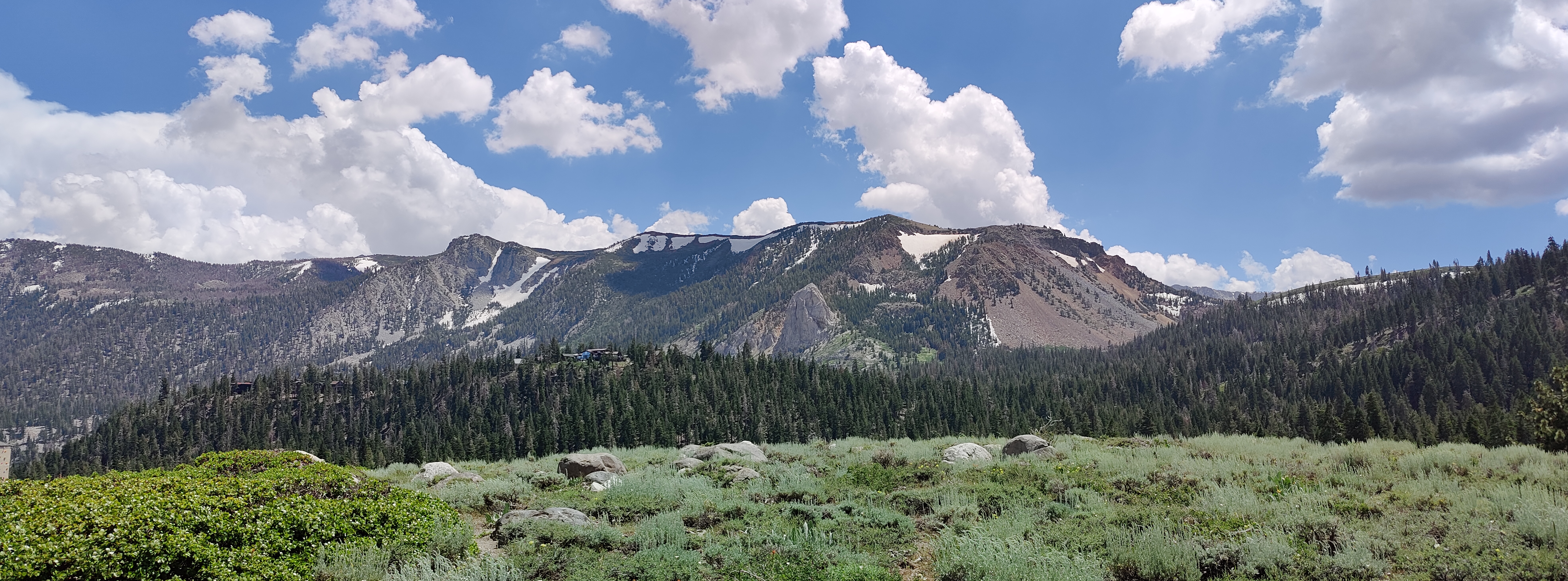The Project
This project was conducted during my time at California Ecology and Conservation. My cohort and I were stationed in the Eastern Sierra Nevada at the NRS’s Sierra Nevada Aquatic Research Laboratory (SNARL) conducted the field research at SNARL’s sister reserve, Valentine Camp, near the skiing town of Mammoth, California. This project was conducted by a team of 4, but the paper was completed on an individual basis. My team and I were interested in the potentnial influence of snowfall or temperature on the phenophases of plants within the area. A phenophase is a crucial stage in the life cycle of an organism. In plants, phenophases can include flowering or blooming, fruiting, seed dispersal, and leaf senescence or death. We sought to identify differences in the timing of the flowering stage across multiple years using a database of phenological data collected by volunteers at Valentine Camp through the California Phenology Project. Since the wet season in the early part of 2023 saw record-breaking levels of snowfall in the Sierra Nevada which allowed snowpack to be higher than normal later in the season (snow in July!), we compared phenological data between years of increased precipitation and decreased precipitation with an average baseline to determine the influence of snowpack on plant phenology.
We found that increased snowpack did delay flowering time of three out of the four study species, while temperature did not have an effect. This suggests that as the variability in weather conditions like precipitation continue to change, likely due to the effects of climate change, it can have a lasting impact on ground vegetation. This can have ecosystem-wide impacts as well. For instance, many plants rely on flowering around the same time as other plants to increase attraction for pollinators in a process called co-flowering. A change in the flowering time of plants like these can cause them to become out of sync with their co-flowering companions, and with key pollinators and seed dispersers. Invasive plants can also exploit the delayed phenological timing of native plants by utilizing resources or colonizing land while native plants are inactive, which can alter the natural landscape. Animals that rely on plants for food resources may also be affected. This study demonstrates how just one facet of climate change can have intricate and profound effects.

Montane chaparral plants in the foreground in the Sierra Nevada.
The Accomplishment
Writing this paper was quite the accomplishment for me. This was the first full-length research paper I had written from research that I had conducted. The deadline was extremely tight with only 10 days total for conceptualizing the study, conducting background literature research, running pilot tests, performing field and online research, and presenting our findings; and within that period, only 4 days of paper writing. 4 days to write a full-length research paper! Across all four days, my team members constantly found me laying or sitting in bed, typing away at my laptop. We were in a cabin in Yosemite: no desks, limited internet access, and stuck inside working instead of being outside enjoying one of the most beautiful places in the country. Sometimes, when I was tired of my bed, my friends found me standing on the mini staircase of our cabin, finding the next best thing to a standing desk to stretch out my legs while I worked myself away.
But all the long nights, early mornings, and skipped meals were worth it. The relief I felt after submitting my paper for grading was only surpassed by the joy from seeing my grade. Shortly after the professors explained they were grading our papers hard so that we understood what we needed to improve upon, I found myself face to face with an A letter grade, the only one in my cohort. I was relieved that after all the work I put into the project, it was recognized by my superiors and paid off nicely. But the achievement was more than that. Since the start of the program, it was evident to me that I lacked the experience and drive my fellow classmates had. I hadn’t worked in a research lab. I wasn’t working 3 jobs with another one already lined up after graduation. I wasn’t an expert in any specific area like many of my classmates were. In a class full of some of the brightest students in ecology, biology, and environmental sciences/studies across the UCs, I found my place among them. I wasn’t concerned about gaining respect from others, but I gained a lot of respect for myself. I learned that even when I may be surrounded and outshone by peers that are more experienced or more knowledgable than I am, I can still excel as myself and my own qualities will find a way to shine in the right moment.
The Product
You can also read the article here: The effect of snowpack and temperature on the phenology of montane chaparral species.